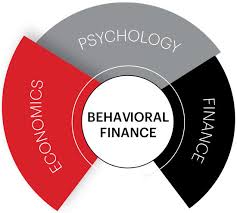
BEHAVIOURAL FINANCE
OKANAGAN COLLEGE
Introduction to Behavioral Finance
In this course, you will explore the influence of psychology on the behavior of those who make decisions related to financial resources and transactions. In the course, you will learn about the wide range of decision making biases, heuristics, framing effects and information processing errors that influence financial decision making.
The course will explore the following topics:
1. Behavioural Foundations
2. Introduction to Behavioural Analysis
3. Valuation Heuristics and Biases
4. Capital Budgeting and Behavioural Finance
5. Inefficient Markets
6. Risk and Return Perceptions
7. Capital Structure
8. Dividend Policy
9. Agency Conflicts and Corporate Governance
10. Mergers and Acquisitions
11. Financial Management and Group Process
12. Real Option Techniques applied to Capital Budgeting and Structure
13. Behavioural Aspects of Investing
Over 13 weeks.
Understanding Behavioral Finance
“Behavioral finance can be analyzed from a variety of perspectives. Stock market returns are one area of finance where psychological behaviors are often assumed to influence market outcomes and returns but there are also many different angles for observation. The purpose of classification of behavioral finance is to help understand why people make certain financial choices and how those choices can affect markets. Within behavioral finance, it is assumed that financial participants are not perfectly rational and self-controlled but rather psychologically influential with somewhat normal and self-controlling tendencies.”
www.investopedia.com
CITATIONS
Kenton, W. (2020, July 28). Behavioral Finance. Retrieved February 5, 2021, from https://www.investopedia.com/terms/b/behavioralfinance.asp
- Instructor: Robert Ryan
